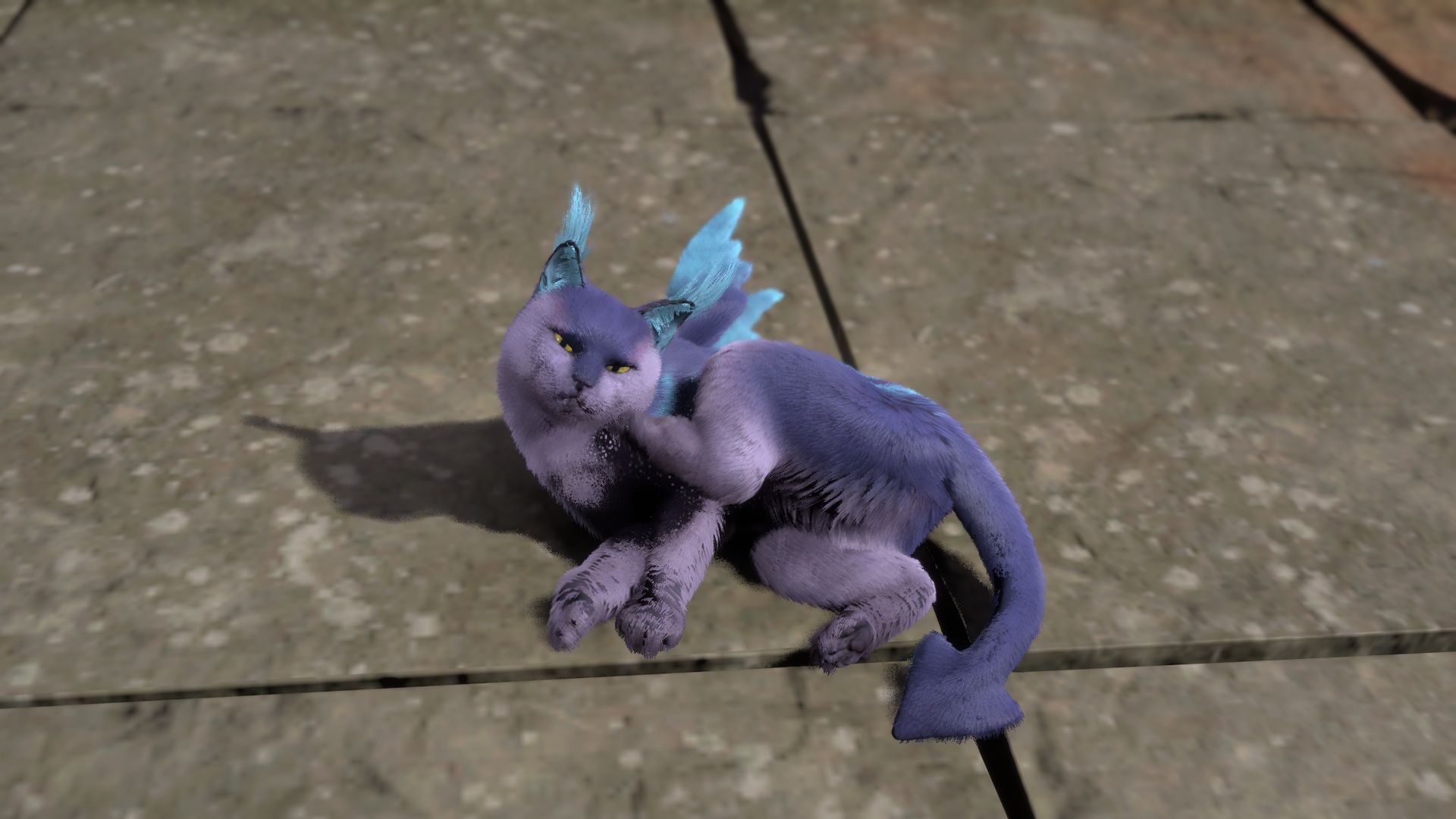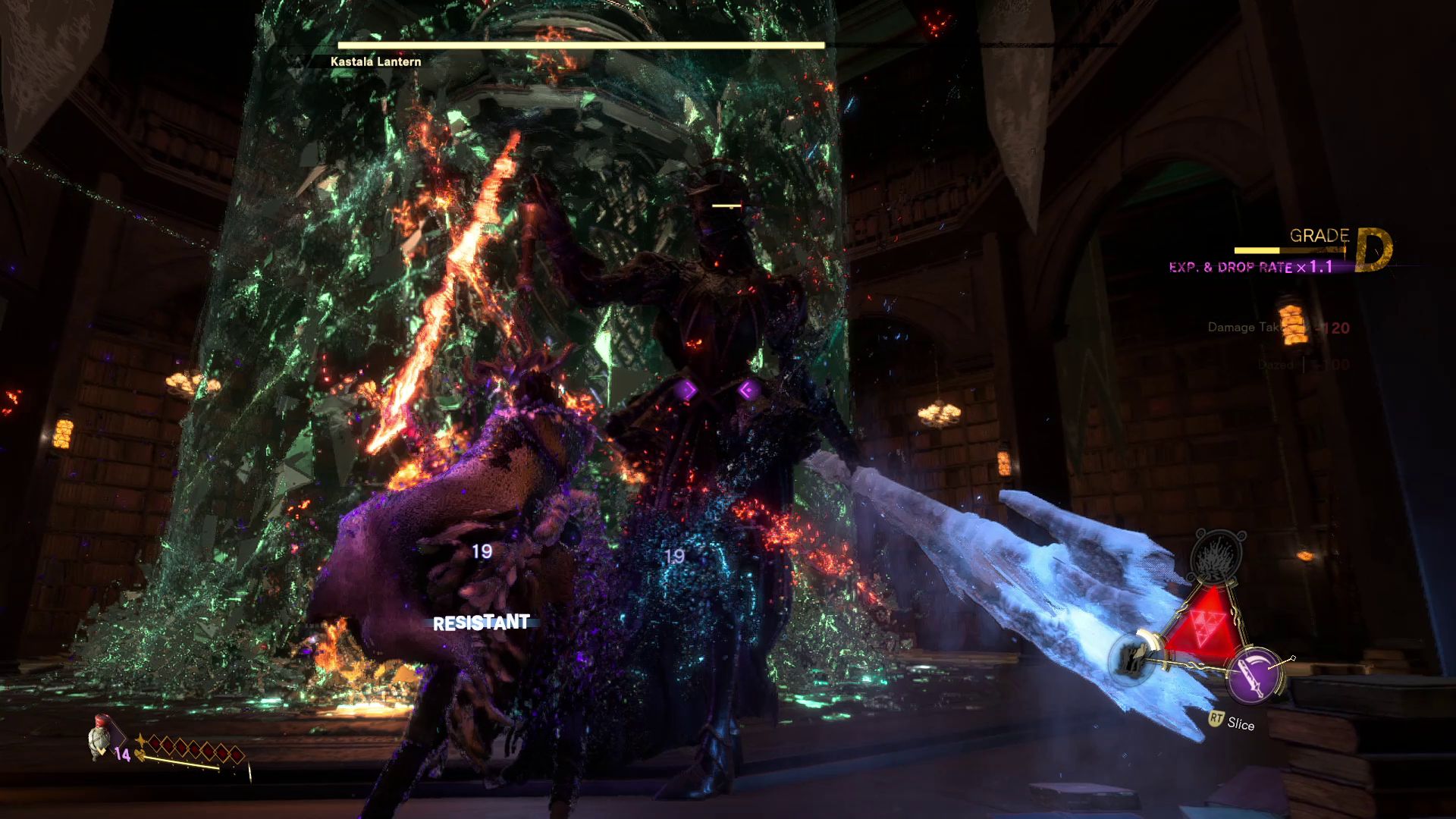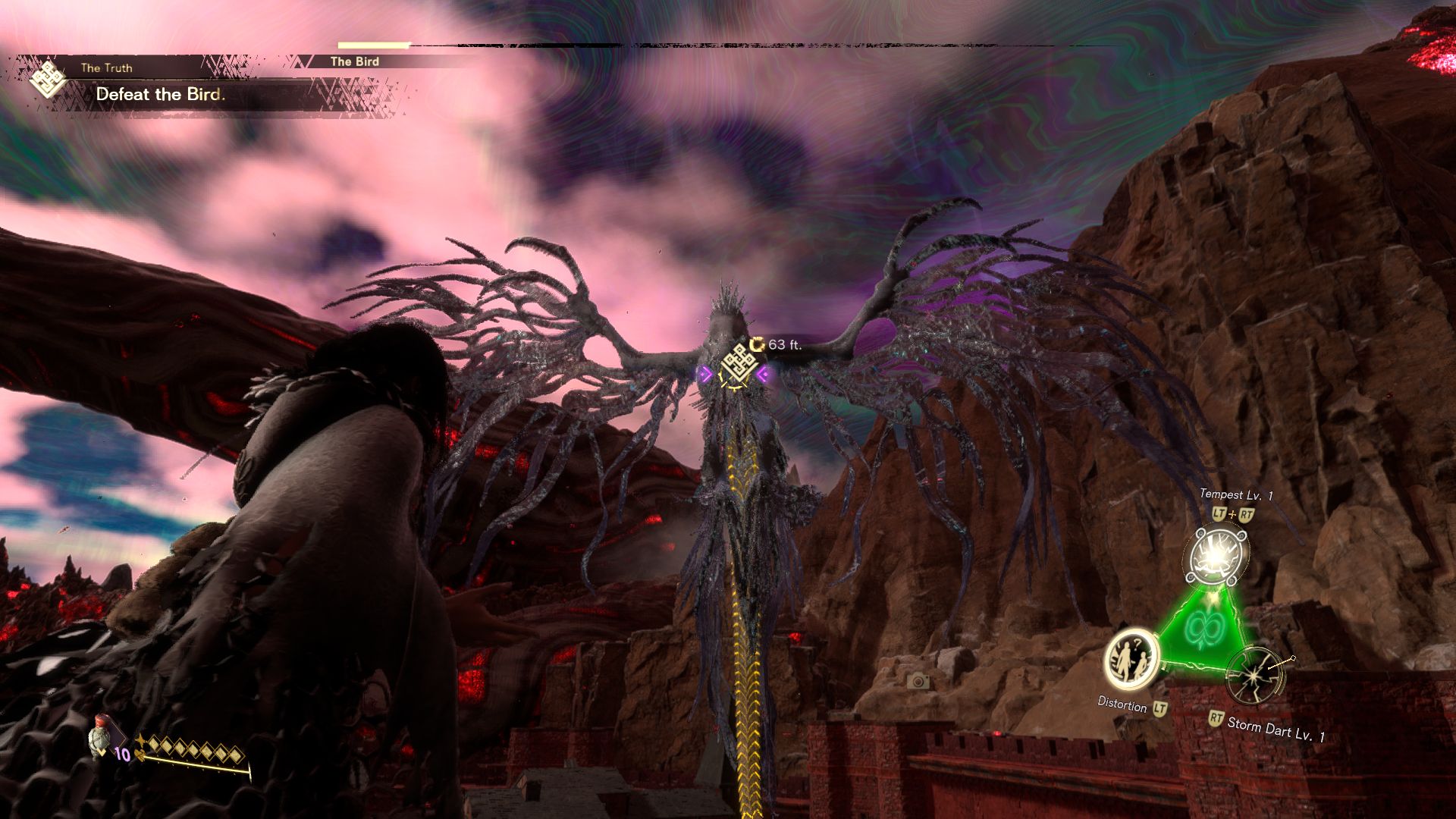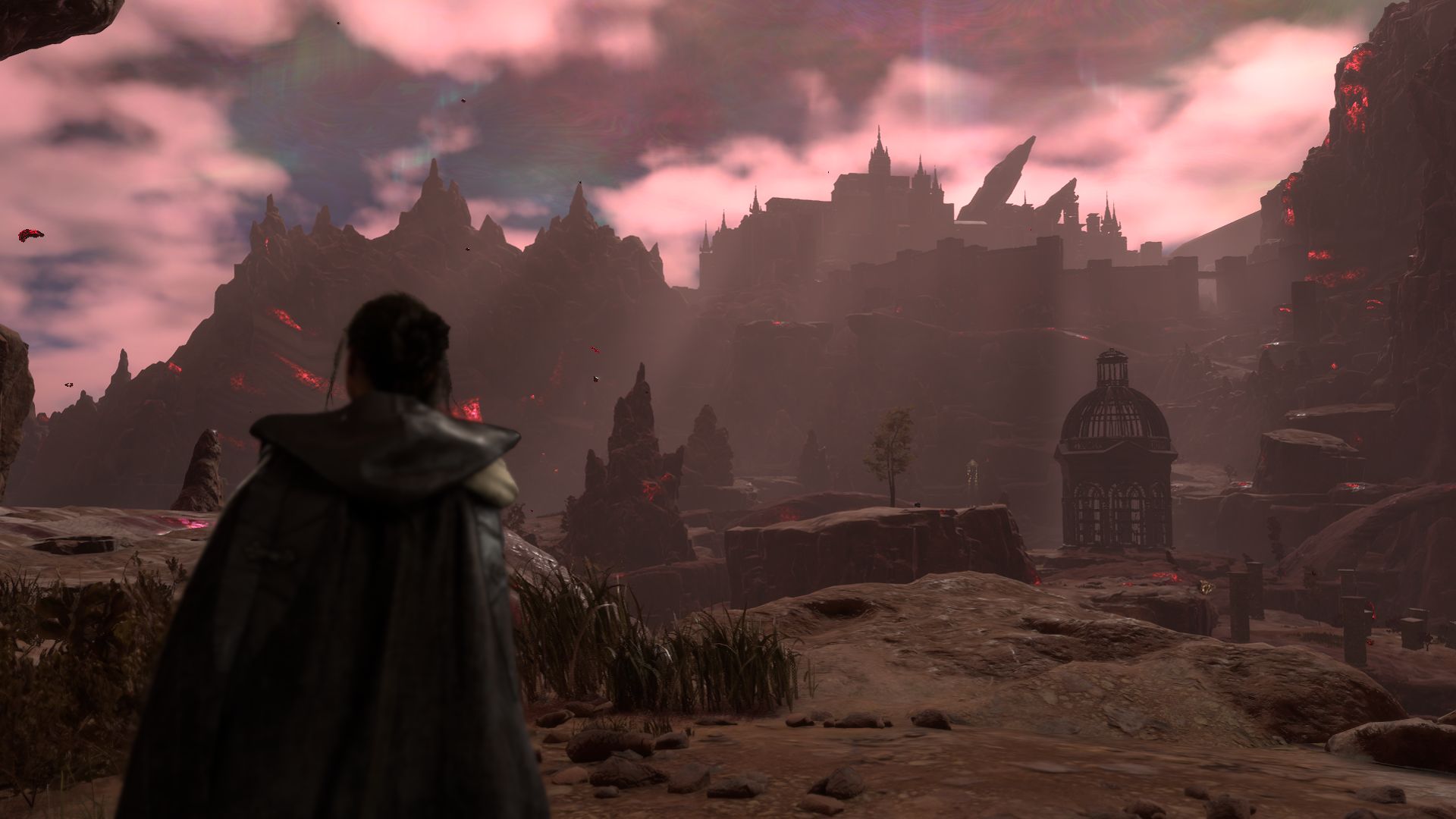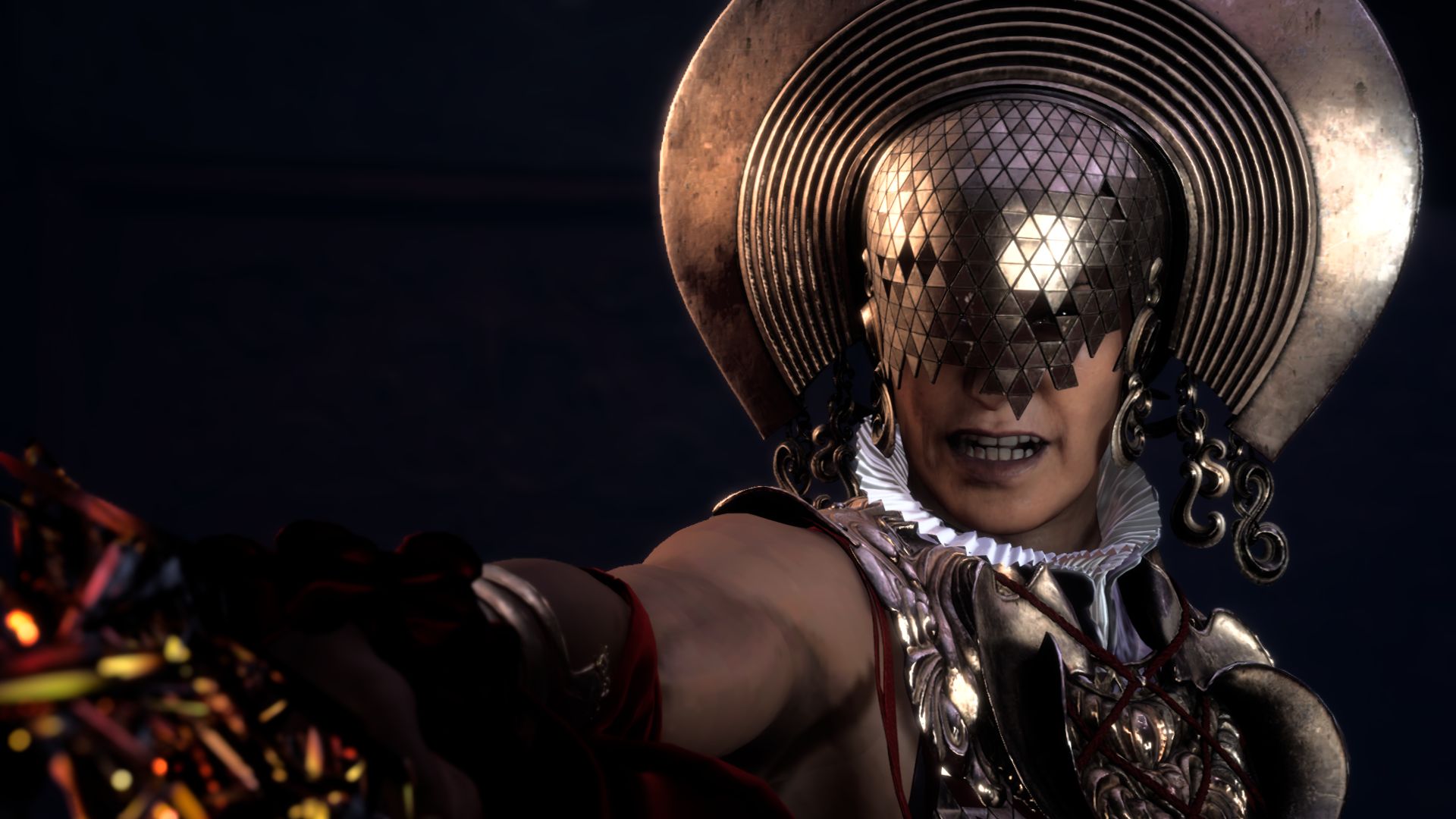Forspoken is somehow both full and devoid of content. There is a huge open world, but it is mostly empty. There is an epic story of magic, other universes, and saving the world, but it only takes up a couple of days. I actually enjoyed a lot of Forspoken, but it gets more fun the more you play, and then it’s over; I didn’t pre-order this game for sixty odd quid, and if I had I’d be disappointed. Even the much-Tweeted about annoying dialogue doesn’t happen much, and isn’t contextually annoying. Forspoken is annoying, though, just not in the ways you might expect if all you’ve seen is people discussing out-of-context clips from cutscenes. Explaining Forspoken means I have to use a lot of fantasy words, which I imagine people come up with by using name generators or picking sounds at random from transcripts of Porky Pig (hence, for example, the review guide asked me to please not spoil anything about the dragon of Junoon. I will not.). Athia’s four former rulers the Tantas have, over the course of 20 years - why, that’s just about how long it’s been since Frey was discovered abandoned in New York at Christmas, but I’m sure that’s a coincidence - gone off their respective rockers. Each has retreated to their own castle and, since their magic is what holds Athia together, is passively generating a miasma of corruption Frey calls The Break. This mutates everyone and thing into wonderful Annihilation-esque monstrosities of increasing fantasy weirdness, and has left only the big capital city of Cipal untouched. Here Frey arrives from New York, occasionally swears at how weird stuff is, and finds she has a talking vambrace, aka Cuff, strapped to her arm. So you go about saving the world, although Frey vociferously protests that the world-saving is only a side-effect of her efforts to get back to New York. Collecting information ramps up to boss fights with the Tantas, and you absorb their different flavours of magic, which are colour coded and vaguely analogous to the elements. Frey’s purple magic allows you to machine-gun fire rocks or hurl explosive boulders, the red magic is all fire punches and flaming swords, blue is water-based and has AOE cyclones, and green, the last one, fires lightning darts that are good for crowd control. You have an array of attack (RMB, or RT) and support (LMB, LT) spells to use from, and there are loads more to unlock. Combat has the potential to be repetitive, especially in the early game when you only have Frey’s rocks to hurl. Later on, though, you can switch styles and combine spells to pull off some genuinely great stuff. Frey’s magic includes some tangling vines to hold enemies in place, and then you can run in with huge sweeps of your firesword, or use a blue magic mega-attack. You can corral enemies with lightning, or distract them with a fake Frey, and then run round the back to launch a massive load of rocks at their faces. Your attacks are modified if you jump or use parkour, too, which I liked doing a lot, wall riding around the place like the Tony Hawk of magic. Magic parkour is basically the only way to travel in Forspoken (there’s also fast travel, but you hardly ever need to do that). You zoom around the different zones of Athia - green hill zone, red rock zone, and sparse pines zone - at speed, and it can be hard to wrangle until you get the hang of it. By the mid-game you get the ability to swing and launch from grapple points, which include trees, and you can pull yourself to large enemies before leaping away again. The traversal, like the combat, is better the longer you play. The thing is, the story is only about 15 hours (I put in 24 for the whole thing, including a bunch of side-activity noodling), and you only get the full set of abilities in a story cutscene just before the final boss fight. That’s a large chunk of game that isn’t as fun as it could be. It’s an uneven balance that you can see in most of Forspoken. The story itself is honestly so obvious that it might be, in a sense, spoiler proof, but that’s fine; the pacing, however, has the consistency of a non-Newtonian fluid. Frey insists that she doesn’t care about fixing the Tanta issue and is not a hero, so characters have to be introduced and then quickly fridged to give her a reason to stay involved. You assume you’re going to have four Tanta boss fights, but one of them is dead when you turn up. The canonical explanation is that she was very tired, and at that point so was I. Frey and Cuff are performed really well, and I liked both them and their bantery dynamic, but neither behaves with a consistent personality. They just react how they need to move the plot along. All this is without mentioning the performance on PC. Forspoken takes a lot of space (120 bleeding gig), so I tried playing it on my SSD - which did improve performace times, as in the map screen only took four seconds to load in - but ultimately had to transfer it to my storage drive, where some load times where so long that I genuinely went and got the book I’m reading to pass the time. In fairness my PC doesn’t quite hit recommended spec because Forspoken is PS5 first, which means it’s theoretically raising the game bar to next gen. Fine. But even at that, I can’t see what it’s doing to justify going out and getting a new graphics card. I definitely suggest James’s recommended PC settings to squeeze out some extra juice on the framerate, but with the best will in the world can’t look at Forspoken and say every cent is on screen, here. It doesn’t look bad, it just doesn’t look anything. Maybe it’s loading in a lot of stuff all at the same time - there are a lot of tall landmarks that you can see off in the distance, but I don’t think that alone is enough for me to go “phwoar, yeah, this is the future alright”. At ground level it’s a very empty world. There’s a lot of stuff to do in Forspoken in theory. Your gear is limited to a necklace, a cloak and painted nails, and new ones can be found in the world. But once you get there, you can keep levelling up the gear you like, so there’s not much incentive to dungeon crawl or face an enemy wave challenge to get more. There are flashback shrines that throw you into a time trial taking place in the past (??) but they’re not especially fun; you can befriend weird cats, but the benefit (aside from more cat) in unclear; there are side quests and character interactions, but even though Frey says something that suggests you can have a positive impact on Cipal that will improve the city, I never saw any changes. There are vendors that exchange artefacts for other weird stuff, but they didn’t appear to give me anything useful. There’s no incentive to actually fucking do anything, and in between the things you can’t be arsed to do are just vaste swathes of nothing. I’m convinced everything in Forspoken would be 100% improved if it was about 60% smaller. The world would be compact, but it would be dense, more interesting, and appropriately scoped. It might have characters in it beyond the same few urchins standing on the streets in Cipal dong one of three “I’m scared” poses, and cutscenes that don’t have a fade to black every five seconds for no apparent reason. It’s so annoying, because I think a lot of the core ideas here are very cool, and it’s one of those games where I want a sequel where they do everything better. Given the nature of these things, I expect we never will.
